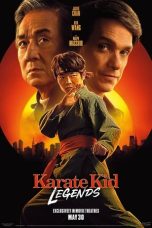Lost in Translation (2003) Movie Review: A Poignant Exploration of Connection and Isolation
Introduction
Sofia Coppola’s Lost in Translation (2003) is a critically acclaimed drama that has resonated with audiences for its poignant exploration of loneliness, connection, and cultural displacement. Set against the backdrop of Tokyo, this film delves into the lives of two American expatriates who forge an unexpected bond amidst their own personal crises.
Plot Summary
Lost in Translation centers around Bob Harris (Bill Murray), a washed-up actor in Japan to film a whiskey commercial, and Charlotte (Scarlett Johansson), a young woman accompanying her photographer husband. Both are struggling with feelings of isolation and disconnection in a foreign land.
Their paths cross in a Tokyo hotel, where they form a deep connection that helps them confront their own emotional struggles. The film captures their growing friendship and the transformative impact it has on their lives. The narrative is both subtle and profound, capturing moments of genuine human connection against the backdrop of a vibrant yet alien city.
Performances and Character Dynamics
The performances in Lost in Translation are central to its success:
- Bill Murray: As Bob Harris, Murray delivers a nuanced performance that blends humor with pathos. His portrayal of a man grappling with midlife crisis and professional stagnation is both touching and memorable.
- Scarlett Johansson: Johansson’s portrayal of Charlotte adds depth and sincerity. Her character’s search for meaning and connection mirrors Bob’s own journey, creating a compelling dynamic between the two leads.
The chemistry between Murray and Johansson is a highlight of the film, driving the emotional core of the story.
Direction and Production
Sofia Coppola’s direction is both elegant and intimate, capturing the essence of Tokyo while focusing on the personal experiences of the characters. Her ability to blend humor with melancholy results in a film that is both visually stunning and emotionally resonant.
The production design and cinematography enhance the film’s atmosphere. The vibrant cityscapes of Tokyo provide a striking contrast to the characters’ internal struggles, adding visual depth to the narrative. The film’s pacing is deliberate, allowing viewers to fully engage with the characters’ emotional journeys.
Themes and Impact
Lost in Translation explores themes of isolation, cultural dislocation, and the search for connection. The film’s portrayal of the characters’ emotional landscapes amidst a foreign setting highlights the universal nature of their struggles.
The film’s ability to capture the subtleties of human relationships and the impact of place on personal identity makes it a powerful and enduring piece of cinema.
Streaming and Availability
For viewers in the United States, Lost in Translation (2003) is available for streaming and purchase on several platforms:
- Amazon Prime Video: Available for rental or purchase in HD.
- Apple TV: Offers the film for rental or purchase with HD streaming options.
- Google Play Movies & TV: Provides options to rent or buy, with streaming in various formats.
- Vudu: Available for rent or purchase, with HD streaming options.
- YouTube Movies: Offers rental and purchase options, with HD streaming.
These platforms offer convenient access for viewers to experience this critically acclaimed film.
Conclusion
Lost in Translation (2003) is a remarkable film that captures the complexities of human connection and isolation. Directed by Sofia Coppola and featuring standout performances from Bill Murray and Scarlett Johansson, the film offers a profound exploration of personal and cultural dislocation. Whether revisiting the film or watching it for the first time, viewers will find a moving and insightful portrayal of the human experience.

















